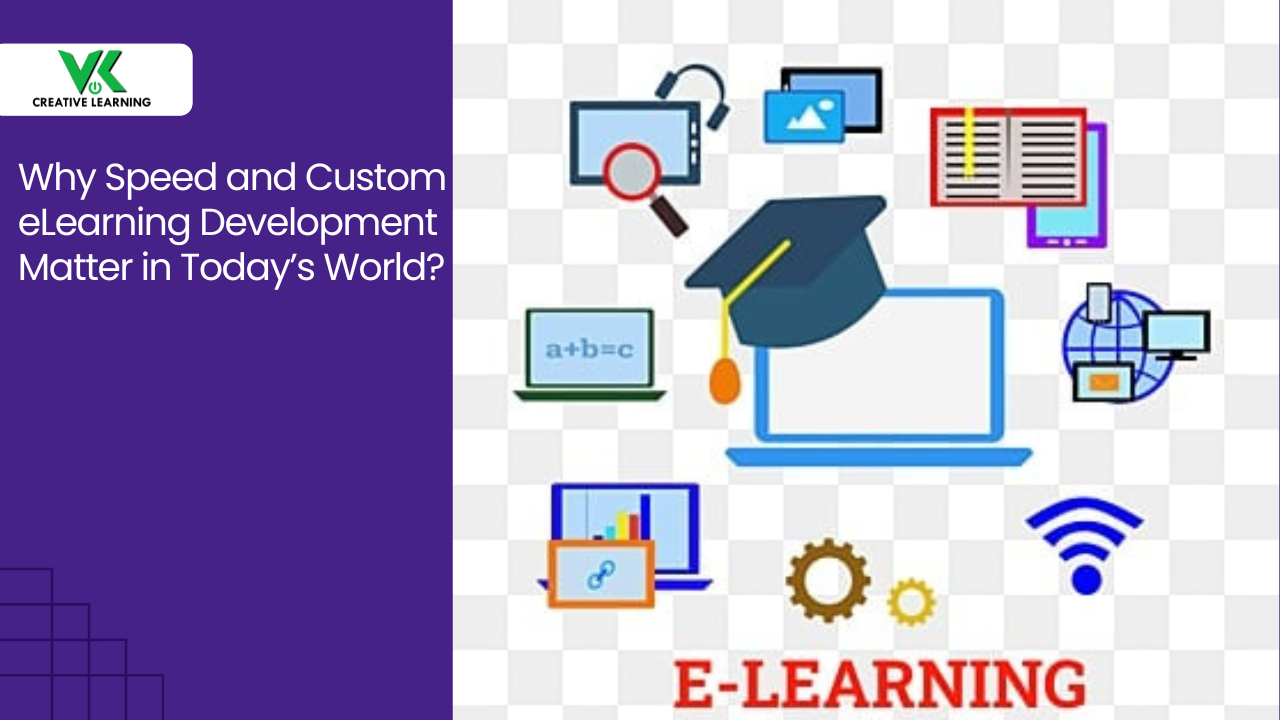Why Incorporate Learning Analytics in Corporate eLearning solution?
May 01, 2022
Learning Analytics is a term that is prevalent in almost every area, including business, education, marketing, and consumer research. The reason why data analytics is widely used in corporate eLearning solutions is because it enables the accurate measurement of the efficacy of L&D plans or executions in various disciplines.
In an increasingly data-driven world, learning and development analytics have become indispensable. Data and Learning Analytics in learning and development gives insights into not only the degree of learning satisfaction among employees but also offers critical indicators for predicting the effect of training on in-field activities.
This comprehensive guide will explain what learning analytics is; how to collect critical learning data, and many forms of Learning Analytics.
Understanding what exactly is Learning Analytics
Learning Analytics is a term that refers to the process of gathering and analyzing data about learners and their environments in order to optimize learning experiences and results.
In other terms, Learning Analytics refers to the process of employing big data to improve eLearning course modules. When learners visit multiple eLearning programs, Learning Management Systems collect massive volumes of important data. This data may be processed, sorted, and reviewed to identify and enhance learning patterns and insights.
Thus, Learning Analytics when integrated into the corporate e-learning solution helps learning and development professionals to gain a better understanding of their learners' behavior.
In fact, Learning Analytics simplifies the process by allowing you to evaluate useful data from an LMS. You may have a more complete understanding of your learner's actions and habits. This information is critical for Learning and Development professionals because it enables them to design effective and successful employee training programs.
Limitations of conventional learning metrics
Given below are some of the limitations of conventional learning metrics.
- Due to unreasonable volumes of information, learning experts and managers are unable to derive the most significant information from learning analytics.
- Statistics are overly vague or only give an overview of non-essential variables like data completion, making outcomes unconvincing.
- Learning analytics are not accessible to enterprises on a real-time basis.
Different ways to gather learning data for 'corporate eLearning solution'
Learning data may be gathered in a variety of methods and formats.
It may be as basic as collecting quiz results automatically through an LMS. Alternatively, it might be more involved, such as conducting one-on-one interviews with team members to ascertain how they resolve difficult problems.
Typically, a learning data collection strategy incorporates two factors:
- Examining facts that you already own
- Collecting fresh data in accordance with the learning program's objectives
- Typically, it is ideal to begin with already obtained data.
Your current data may be kept in Excel spreadsheets, Google sheets, or an LMS database.
Consider your learning objectives and prioritize your accessible data in accordance with them.
Collecting fresh data takes both practical planning and long-term thinking. Bear in mind that learning data evolves regularly as the company demands change. It is critical to gather data in a consistent format and store it in a central place.
The format should be straightforward and simple to read. Numerous LMS systems make use of xAPI technology, which enables tracking across a variety of learning media. xAPI may be used to determine if a student has finished a course, finished a book, or listened to a podcast. The format is simply customizable to match the objectives of your educational program.
Finally, when you develop your new approach for collecting learning data, ensure that the process is repeatable and scalable.
Why incorporate Learning Analytics into an eLearning solution?
Learning analytics provides a holistic view of your learner's progress through the eLearning lesson. You can rapidly assess your learner's performance and evaluate if he needs more guidance to successfully complete the course. Learning analytics may be used to identify whether or not your eLearning training material is relevant and acceptable for your employees.
Effective employee development programs are a critical component of employee retention. Employees are more likely to stay with employers that invest in their career and skill development. However, the most effective training programs are customized, using blended learning and other forms of online learning to keep learners interested throughout the training process.
Globally, organizations are increasing their spending on an eLearning platform incorporated with Learning Data Analytics. This has also helped companies to improve their eLearning training resources by monitoring and evaluating their learners' data.
Thus, you may build an engaging learning experience using Learning Analytics that helps your learners by assisting them in achieving their training goals and objectives.
Different types of Learning Analytics for corporate eLearning solutions
To conduct a thorough analysis of a learning program, three kinds of analytics must be considered; namely, Experience Analytics; Learner Analytics, and Program Analytics.
- The term "Experience Analytics" refers to the examination of real learning events and activities.
- The term "Learner Analytics" refers to the study of an individual or a group of learners' behavior.
- Analytics for Programs: focuses on the whole program and its efficacy in achieving corporate objectives.
Benefits of integrating Learning Analytics in a 'corporate eLearning Solution'
Several advantages of incorporating Learning Analytics into a 'Corporate eLearning Solution' are listed below.
- Employees report increases job satisfaction and morale.
- Increases engagement of an employee
- Increased process efficiency, which results in financial advantage.
- Capacity to embrace new technology and processes increases.
- Enhanced strategy and product innovation.
- Reduced staff turnover; improved corporate image; and better risk management.
Conclusion
In an increasingly data-driven world, organizations profit enormously from the statistics and insights given by learning analytics integrated into eLearning solutions. If your organization has not yet used learning analytics to boost the quality and Profitability of your training programs, now would be the time to begin.
For the same, you can approach VK Creative Learning (VKCL) which creates corporate eLearning solutions, capable of offering in-depth analysis of learning patterns and helping to understand a learner’s areas of improvement.




